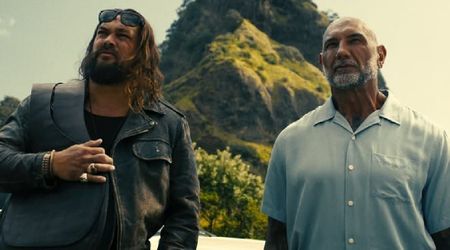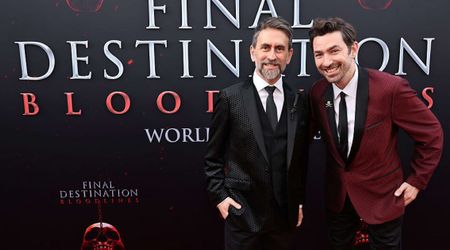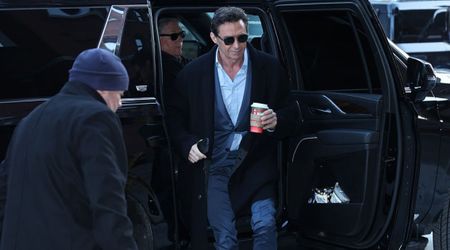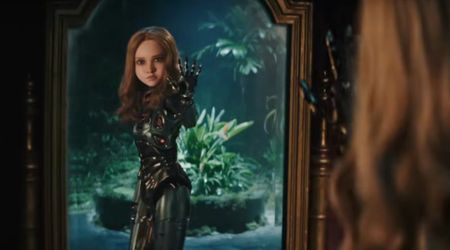'Crip Camp' sound head Jacob Bloomfield-Misrach says turning '70s home videos into Netflix film was 'rare treat'

Netflix's documentary 'Crip Camp' features a stunning soundtrack and score that truly elevates the story it is trying to tell. MEA WorldWide (MEAWW) got to chat with sound supervisorJacob Bloomfield-Misrach, who worked on bringing the film's audio to life.
You’ve come a long way from your work on the Aziz Ansari TV special. What has the journey been like, going from your earlier days of sound mixing to working as a sound supervisor?
It's been a fantastic journey. Although I must say I had quite a lot of fun on the Aziz special as well. It was just me, him and a cameraman in a cab driving all over NYC, going from club to club, filming him doing pop up practice rounds at various comedy clubs. I did a lot of production sound in New York for years before transitioning into my work as a post supervisor and a composer and I started offering to do the post-mix for many friends I made over the years. It all grew from there.
Speaking of composing, do you find supervising very different from scoring a film?
They are indeed very different experiences. I am very introverted when scoring a film. I have to dig down into myself to find all the hidden emotions that might want to come out for a film. When supervising, it’s very extroverted. I’m a team captain at IMRSV and I have to stay connected to my crew to make sure they have what they need to make the best possible film. Most of the time, I'm supervising several films at once while also scoring multiple projects. So the real trick for me is juggling both at the same time.
‘Crip Camp’ features audio taken from archival footage shot by co-director/producer Jim LeBrecht while he was at Camp Jened in the '70s. There's a certain authenticity to home footage but there is also a necessity of ensuring the quality is worthy of a larger production. How do you make archival footage work for a documentary like ‘Crip Camp'?
This was a rare treat from a post sound perspective. The handheld recordings of a 15-year-old who is away at camp have so much intrinsic charm. What most people don’t realize is that the charm comes from the noise, the pops, the wind, the off-camera commentary, and all of the stuff that would generally be considered bad production sound. If we were to clean that up too much, it would be more polished, but it would lose all the character. So, Jim, co-director and producer Nicole Newnham, producer Sara Bolder, and sound designer Bijan Sharifi, took painstaking attention to the details and went frame by frame through the film, deciding which extraneous noises were adding to the film and which noises were simply distracting. And then we began the dialogue edit from there.

You had to re-create about 80% of the archival audio and then make sure it stayed consistent with the footage. How hard was this process?
Yes, that was a big job for my sound team and Jim who played a major role in much of the conceptual work, mixing and audio sweetening. The most fascinating aspect of archival sound design is that it must be completely invisible. We're only doing our job right if you have no idea we were there. One great example of this is the wheelchair Foley we did throughout the film. Wheelchair technology changed drastically over the course of the film. Also, the types of cameras capturing that footage was changing.
We had manual wheelchairs being filmed in the '70s, '80s and '90s, all on different surfaces like gravel, cement, dirt and wood, in addition to the introduction of electric and motorized wheelchairs on different surfaces and each of those had to sound different. Then we had to distress all of those sounds to make sure they matched the archival footage of the appropriate decade.
Is there a specific portion of the sound on 'Crip Camp' that you are particularly excited for people to hear, perhaps a section of the sound work that you’re especially proud of?
There's a small moment of sound design where Jim tells a story about taking his friend's motorcycle for a ride and ultimately crashing it. I don’t know if it’s our proudest moment, but it was certainly some of the most fun we have had in a while.
Besides 'Crip Camp', are there any other major projects you are currently working on?
The current shutdown of all film festivals has been quite a game-changer. I was the supervisor and mixer on '12 Hour Shift' and 'You Cannot Kill David Arquette', which were supposed to premiere at SXSW and Tribeca Film Festival this month. That's been a bummer as I was supposed to attend both. But I bet those films will pop up online pretty soon. I'm also scoring a new TV show that will be out next year, but I’m not allowed to talk about that one yet.
For now, I recommend everyone stay at home and watch 'Bathtubs Over Broadway' (I was the dialogue editor on that) and 'Crip Camp'. They are both on Netflix.










